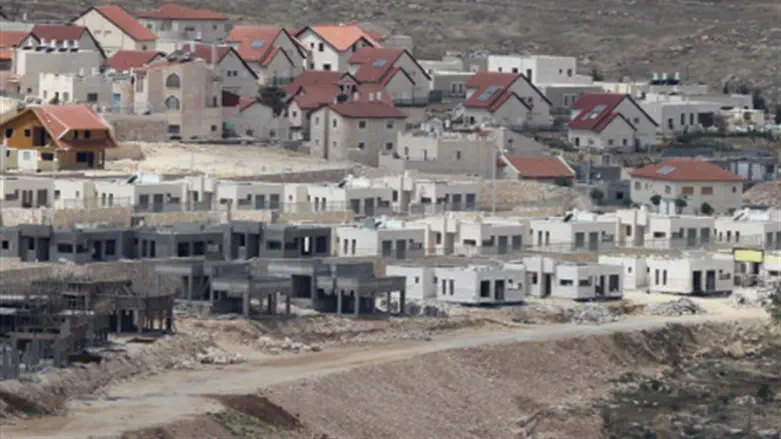
Despite a series of reports by Israeli government officials in recent weeks of a new wave of construction planned for Judea and Samaria, it appears that the Defense Ministry’s Civil Administration Higher Planning Committee will grant final approval to less than a quarter of the nearly 4,000 homes up for review at the committee’s meeting next week, with just several hundred more receiving a green light from the Netanyahu government.
In September, a senior Israeli official told Arutz Sheva that more than 3,000 housing units were set to be approved by the planning committee in mid-October, after the Sukkot holiday.
“The committee will meet after the holidays at the very latest,” the source told Arutz Sheva, adding that “the plan is to authorize thousands of housing units.”
The claim was echoed by similar statements to other Israeli media outlets, including Channel 2.
On Sunday, it was reported that a total of 3,829 housing units in Judea and Samaria would be approved next week, including new projects in Ariel, Tzofim, Rehalim, Nogohot, Givat Zeev, Beit El, Hevron, Tekoa, Kfar Etzion, Avnei Hefetz, Nofim, Kochav Yaakov, Har Bracha, and Maaleh Michmash [Michmas].
But according to planning committee’s agenda for next week, which was publicized Tuesday, the overwhelming majority of the 3,829 units in question will not receive final approval, while some are have already been constructed and will merely be receiving retroactive approval.
Of the 3,829 units which are expected to receiving approval at next week’s Higher Planning Committee meeting, only 870 are slated to receive permits – the last step before the projects can be put on the market.
Close to 3,000 of the units under examination are expected to receive preliminary approval, and will require further hearings by the planning committee before they can be marketed.
Of the 870 housing units which will receive building permits, dozens – including some homes in Nogohot and Rehalim – have already been built, and will merely be receiving retroactive approval.
An additional 326 housing units, including 296 in Beit El and 30 in the Jewish community in Hevron, are also expected to be green lighted for marketing following the end of the Sukkot festival this week.
Even then, the total figure of units likely to be cleared for construction and marketing is less than 1,200 – less than a third of all housing units to be examined next week.
In August, Prime Minister Binyamin Netanyahu reaffirmed his pledge to build 300 new homes in Beit El – a promise he originally made after the Supreme Court ordered 30 units in the Ulpana neighborhood of Beit El demolished in 2012.
"From Beit El will come forth Torah and good tidings - the message of the return of the people to its land, the message of settlement. I will give you more good tidings. Very soon another 300 housing units will be approved, as promised," Netanyahu said in a video message to residents in August.
Late last month, it was announced that the Civil Administration Higher Planning Committee had postponed a planned meeting during which approval would likely have been given to the new housing units, but which was to have coincided with a visit by special Trump administration envoy Jason Greenblatt.
Following the postponement, a number of Israeli lawmakers criticized the White House, accusing it of walking in the footsteps of the Obama administration.
On Sunday, an Israeli government official told Yediot Ahronot that Israel and the Trump administration had settled on an arrangement to stagger announcements of new construction in Judea and Samaria, in exchange for an end to US condemnations of Israeli housing projects.
"There was a long dry period during the Obama era, and we were hit with condemnations for every construction in the settlement," the official said.
"After Trump came into office, Israel and the new American administration set clear criteria for construction that the Americans were not opposed to, such as canceling the distinction between settlement blocs and isolated settlements. In addition, it was made clear that the Americans no longer consider the settlements an obstacle to peace."
